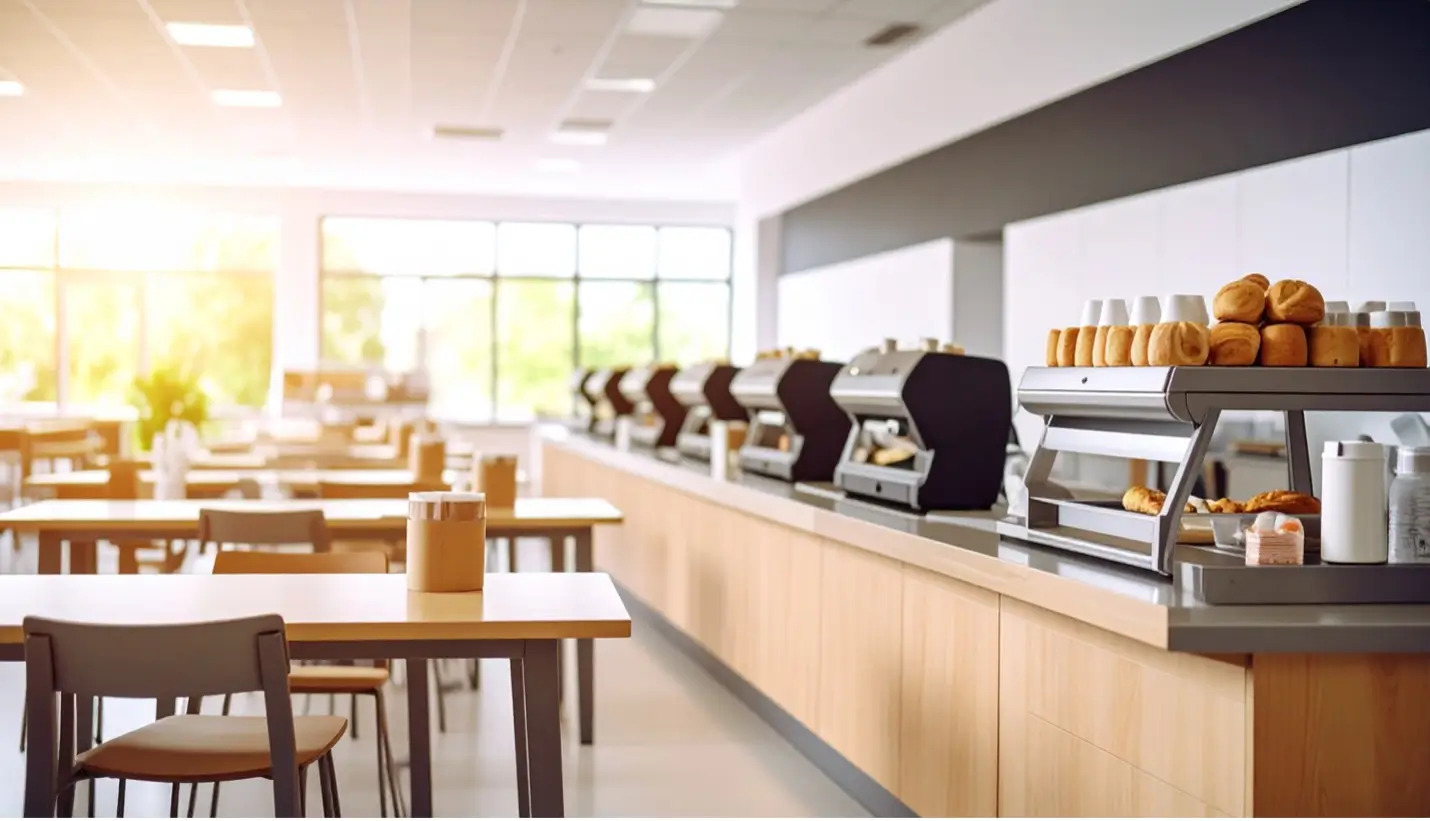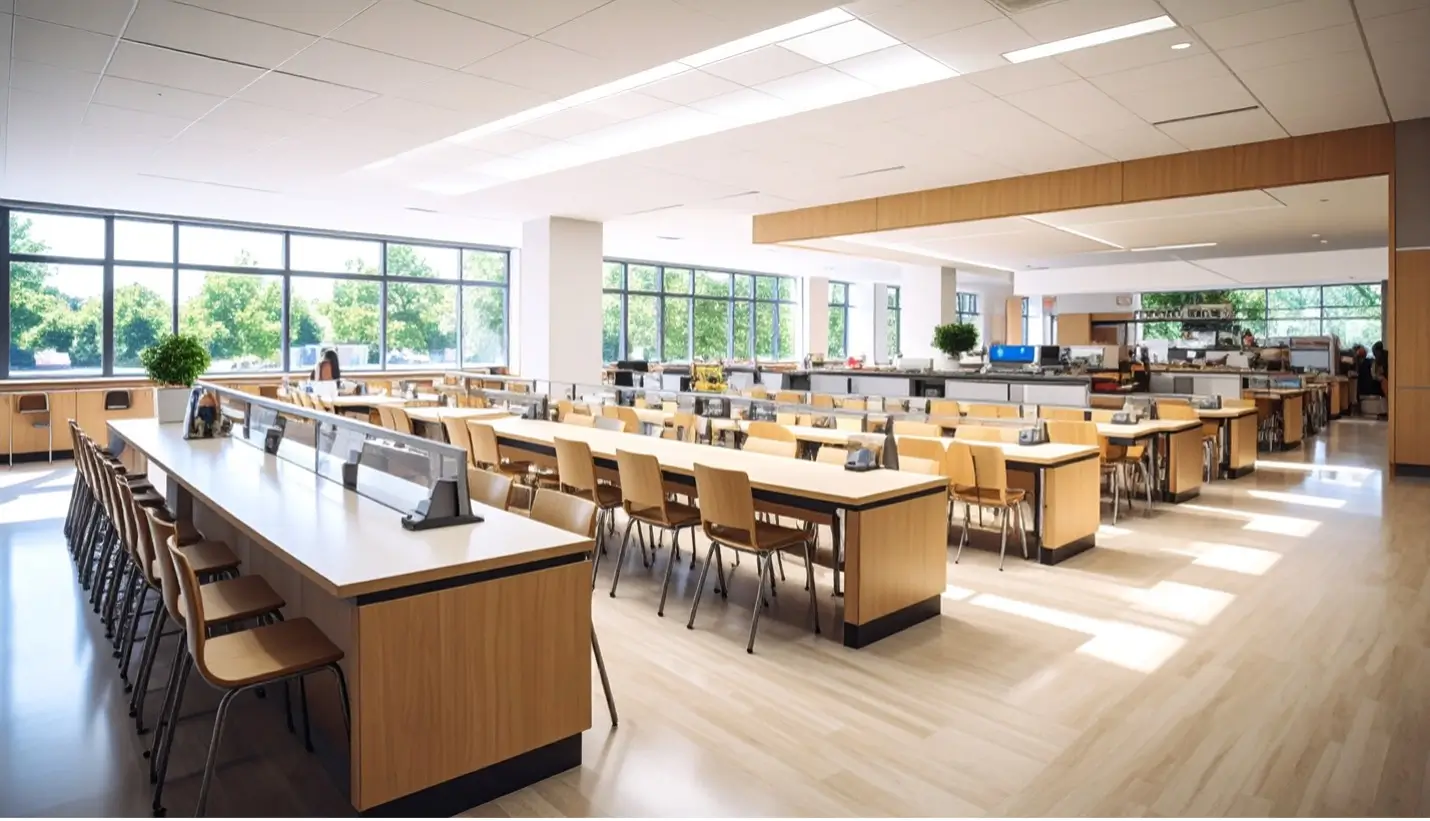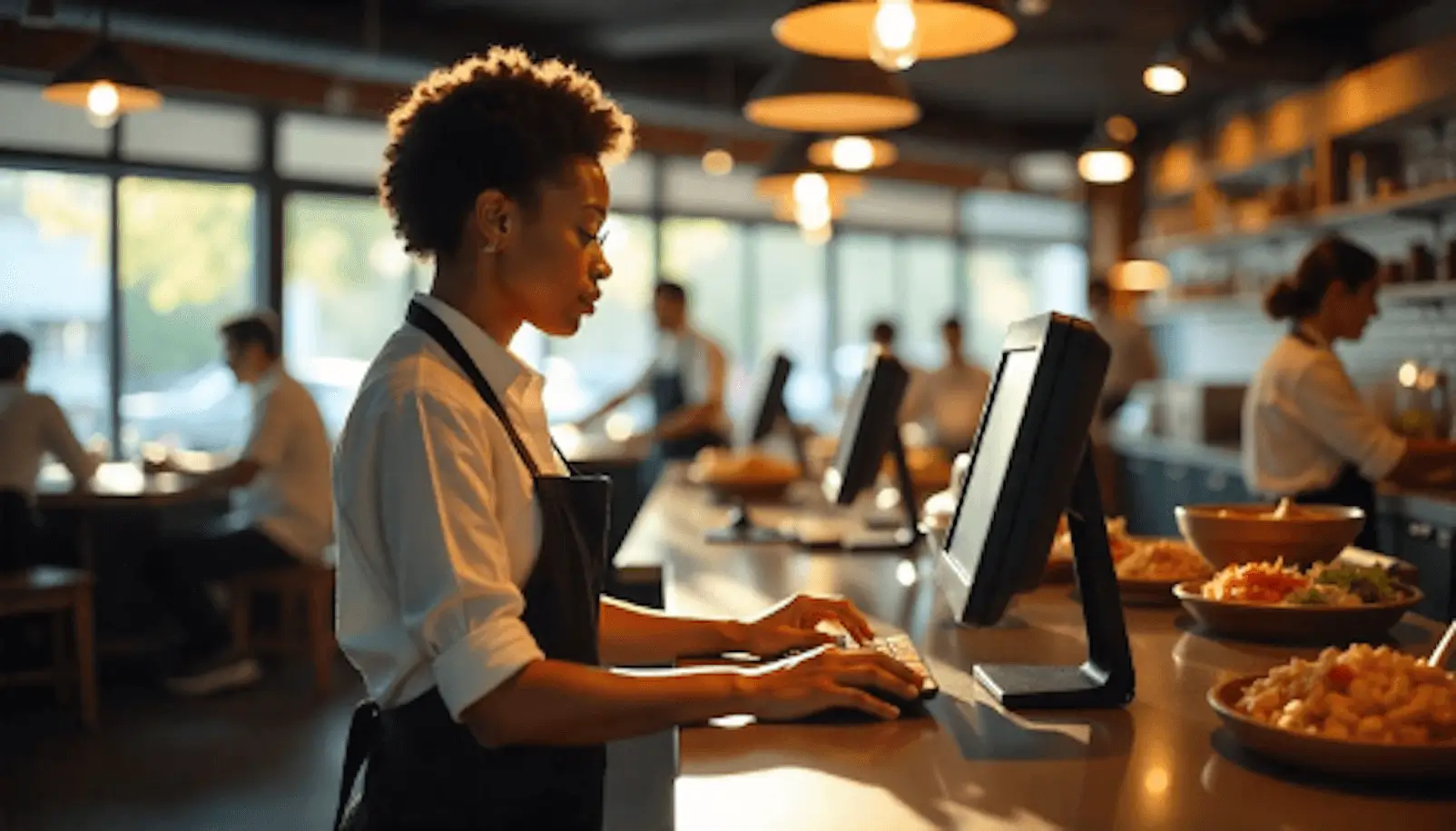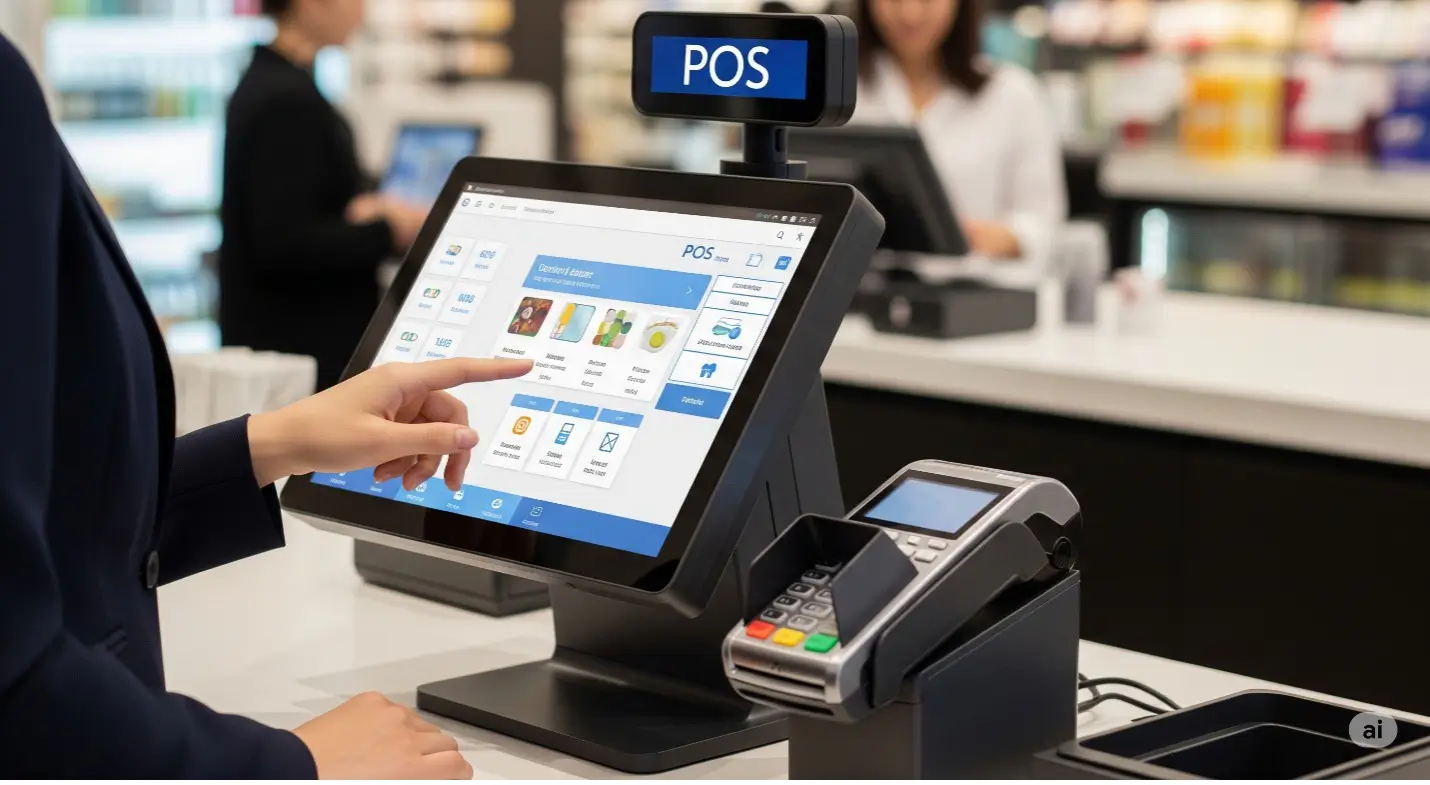
What is Point of Sale (POS) in School?
Point of Sale (POS) systems have become essential tools in today's schools. These digital payment systems help schools manage money transactions, track sales, and improve how they serve students and staff. But what exactly is a POS system in a school setting, and why are so many educational institutions making the switch?
A POS system in schools is an app on Mobile or Web or installed on computer that helps process payments and manage sales at various locations like cafeterias, bookstores, and school events. Think of it as a smart cash register that can do much more than just handle money. These systems connect different parts of the school's operations, making everything run smoother and more efficiently.
Understanding POS Systems in Educational Settings
School POS systems work differently from regular store systems. They need to handle unique challenges like allergies control, student lunch accounts, free meal programs, and large volumes of transactions during short lunch periods. These systems must also keep track of student dietary restrictions and meal plans.
Most school POS systems connect to a central database either locally or on cloud that stores student information, account balances, and transaction history. When a student buys lunch, the system quickly identifies them through an ID card, PIN number, or even biometric scanning. The system then deducts the cost from their account and records what they purchased.
Schools use POS systems in many areas beyond the cafeteria. They help manage bookstore sales, event ticket sales, fundraising activities, and even vending machine purchases. This creates a unified system that tracks all money flowing through the school.
The Evolution from Cash to Digital in Schools
Many schools still rely on old-fashioned cash systems. Students bring money to school, stand in long lines, and cafeteria workers manually count bills and coins. This process is slow, creates long wait times, and leads to errors. Cash also creates security risks and makes it hard to track what students are buying.
Digital POS systems solve these problems by speeding up transactions and reducing human error. Students can prepay their accounts online, and parents can monitor their child's purchases from home. The School Canteen POS technology has transformed how schools handle meal services, making everything faster and more accurate.
Modern schools need systems that can handle hundreds of students in just a few minutes during lunch periods. Traditional cash registers simply cannot keep up with this demand, which is why more schools are switching to advanced POS technology.
Key Benefits of School POS Systems
1. Automation and simplification of tasks
POS systems automate many tasks that school staff used to do by hand. Instead of manually calculating totals, counting change, and writing receipts, the system handles everything automatically. This saves time and reduces the workload on cafeteria staff.
The system can automatically apply discounts for free or reduced-price meals, eliminating the need for staff to remember which students qualify for these programs. It also automatically updates inventory levels when items are sold, helping kitchen staff know when to reorder supplies.
Staff can focus on serving students and maintaining food quality instead of struggling with math calculations and paperwork. This leads to better service and happier students and staff members.
2. Accuracy
Human errors in cash handling can be costly for schools. When cafeteria workers manually calculate prices and make change, mistakes happen. These errors can add up to significant losses over time.
POS systems eliminate most calculation errors by automatically computing totals, taxes, and discounts. The system ensures that students are charged the correct amount every time, and account balances are updated accurately.
Accurate record-keeping also helps schools comply with government meal program requirements. The Cloud POS System technology ensures that all transaction data is properly stored and easily accessible for audits and reports.
3. Easy access and lookup of transaction history
School administrators and parents need access to purchase history for various reasons. Maybe a parent wants to see what their child is buying for lunch, or the school needs to verify transactions for accounting purposes.
POS systems store detailed transaction records that can be searched and reviewed at any time. Parents can log into online portals or apps to see their child's purchases, account balance, and spending patterns. This transparency builds trust between families and schools.
School staff can quickly look up any transaction to resolve disputes or answer questions. This level of detail would be impossible to maintain with cash-only systems.
4. Manage store/supplies/inventory management
Keeping track of inventory is a major challenge for school cafeterias and bookstores. Without proper systems, schools might run out of popular items or order too much of items that don't sell well.
POS systems automatically track inventory levels as items are sold. When inventory gets low, the system can alert staff to reorder supplies. This prevents stockouts and reduces food waste.
The system also provides valuable data about which items are most popular and when peak selling times occur. This information helps schools make better purchasing decisions and plan their menus more effectively. School Cafeteria POS systems excel at providing these detailed insights.
5. Generate reports for analysis
Data is powerful, but only if schools can access and understand it. POS systems generate detailed reports that help administrators make informed decisions about their food service programs.
Reports can show:
- Sales trends
- Popular menu items
- Peak transaction times
- Revenue by location
This information helps schools optimize their operations and improve profitability. Financial reports make it easier to track expenses, manage budgets, and prepare for audits.
Advanced Features of Modern School POS Systems

Today's school POS systems offer features that go far beyond basic payment processing. Many systems include nutritional tracking, allowing schools to monitor whether students are making healthy food choices. This is especially important as schools work to combat childhood obesity and promote better eating habits.
Some systems integrate with student information systems, automatically updating attendance records when students make purchases. This creates efficiencies across multiple school departments and reduces duplicate data entry.
Mobile POS capabilities allow schools to process transactions at outdoor events, sports games, and field trips. Staff can take payments anywhere with a tablet or smartphone, expanding revenue opportunities for schools.
Implementation Considerations for Schools
Before choosing a POS system, schools need to consider their specific needs and budget constraints. Different systems offer various features, and schools should prioritize the capabilities that matter most to their operations.
Training is crucial for successful implementation. All staff members who will use the system need proper training to ensure smooth operations. Schools should also have backup plans in case of technical problems.
Integration with existing school systems is another important factor. The POS system should work well with student information systems, accounting software, and other technology already in use at the school.
The School Catering POS offers many options, from simple standalone systems to comprehensive platforms that integrate with multiple school operations. Schools should carefully evaluate their options and choose a system that will grow with their needs.
Security and Privacy Considerations
Schools handle sensitive student information, so security must be a top priority when implementing POS systems. The system should encrypt all data transmissions and store information securely to protect student privacy.
Key security features include:
- Data encryption
- Access controls
- Regular updates and monitoring
Schools must also comply with various regulations regarding student data privacy. The POS system should include features that help schools meet these requirements and maintain compliance.
Cost Considerations and Return on Investment
While POS systems require an initial investment, they often pay for themselves through increased efficiency and reduced errors. Schools save money on staff time, reduce cash handling costs, and minimize losses from calculation mistakes.
Benefits that lead to ROI:
- Better purchasing decisions
- Reduced food waste
- Optimized inventory levels
- Increased revenue via easier payment methods
Future Trends in School POS Technology

The future of school POS systems looks exciting, with new technologies emerging regularly. Artificial intelligence is beginning to help schools predict demand and optimize inventory management.
Mobile payment options are becoming more popular, with some schools allowing students to pay using smartphone apps. This appeals to tech-savvy students and can speed up transaction times.
Biometric payment systems are also gaining traction, allowing students to pay using fingerprint or facial recognition technology. This eliminates the need for cards or PIN numbers and speeds up the payment process.
Summary
POS systems have revolutionized how schools handle payments and manage their food service operations. These systems offer numerous benefits including automation, accuracy, detailed reporting, and improved inventory management. While implementation requires careful planning and investment, the long-term benefits make POS systems essential tools for modern schools.
Schools considering a POS system should evaluate their specific needs, budget constraints, and integration requirements. With proper planning and implementation, a POS system can improve efficiency, reduce costs, and provide better service to students and families.
The technology continues to evolve, offering new features and capabilities that help schools operate more effectively. As schools face increasing pressure to manage costs while improving services, POS systems provide valuable tools for achieving these goals.
Frequently Asked Questions
- Q: What does POS stand for in schools?
A: POS stands for Point of Sale. In schools, it refers to computer systems or apps that process payments and manage orders in cafeterias, bookstores, and other locations where students and staff make purchases. - Q: How do students pay using a school POS system?
A: Students typically use ID cards, PIN numbers, or biometric scanners to access their prepaid accounts. Some systems also accept credit cards, debit cards, or mobile payments for immediate transactions. - Q: Can parents monitor their child's purchases through the POS
system?
A: Yes, most modern school POS systems offer parent portals where families can view purchase history, check account balances, and add money to student accounts online. - Q: What happens if the POS system goes down during lunch?
A: Schools should have backup procedures in place, such as manual transaction logs or alternative payment methods. Many systems also work offline temporarily and sync data when connectivity is restored. - Q: How do POS systems handle free and reduced-price meal programs?
A: POS systems automatically identify eligible students and apply appropriate discounts without revealing their status to other students, maintaining privacy and dignity. - Q: Are school POS systems secure?
A: Reputable school POS systems use encryption, secure data storage, and access controls to protect student information. Schools should choose systems that comply with relevant privacy regulations. - Q: How much do school POS systems cost?
A: Costs vary widely depending on features, number of terminals, and student population. Schools should consider both upfront costs and ongoing fees when evaluating options. - Q: Can POS systems track nutritional information?
A: Many modern systems can track nutritional data, helping schools monitor whether students are making healthy food choices and comply with nutritional guidelines. - Q: How long does it take to implement a school POS system?
A: Implementation timelines vary but typically range from a few weeks to several months, depending on system complexity, staff training needs, and integration requirements. School POS System can be implemented within 24hrs. - Q: Do small schools need POS systems?
A: Even small schools can benefit from POS systems, though they might choose simpler solutions. The key is finding a system that matches the school's size, budget, and operational needs.
Ready to modernize your school's payment systems? CanteenPOS offers comprehensive solutions designed specifically for educational institutions, helping schools improve efficiency while providing better service to students and families.

